Macro Calculator
This free, easy-to-use macro calculator gives you your optimal macronutrients and calories. It’s a weight loss or muscle gain calculator for both women and men.
Combine with macro counting or flexible dieting to reach your goals faster.
How to get leaner and stronger?
Our comprehensive macro-based fat loss program shows you how. Learn more
How do macros work?
The foods we eat are made up of three macros (macronutrients). These are carbohydrates (carbs), protein, and fat.
Chicken is high in protein but has no carbs; rice is high in carbs but has very little fat or protein. The three macronutrients provide the body with energy and raw materials for growth and repair.
By calculating the appropriate daily calorie amount for you, we can then break this down into the best macronutrient ratios to achieve weight loss.
Basic steps for macro counting
- Enter details into the calculator
Make sure to choose the correct goal. - Take note of your calories and macros
These will be the targets you are aiming for each day. - Track your macros
Use an app or pre-plan your meals. - Measure results
Don’t use basic weight scales.
Use proper body composition scales (we recommend Renpho) to measure fat and muscle mass changes.
What is a good macro ratio for fat loss or muscle gain?
Your macros should be based on your Total Daily Energy Expenditure (TDEE) and goals.
The calculator defaults to the best macro ratio proven to work for most people.
This ratio is:
- 30% fat
- Protein is 0.65 grams per pound of body weight,
- The remainder is carbs.
Depending on your goal, this will be either a calorie deficit or a surplus.
You can go further and make more adjustments: Perhaps you’re an extreme endomorph and do better with fewer carbs. Or perhaps you have one kidney and need to eat less protein.
You can fine-tune your results with a bit of math. See how to change your macros here.
What is a good protein ratio?
Rather than a percentage, proteins are based on your body weight. Our calculator has three settings:
- Moderate adjusts the ratio to 0.65 grams per pound of body weight.
This is appropriate for sedentary individuals or people with higher body fat percentages. - High is for active people with moderate strength training and an average body fat percentage.
- Maximum will set the ratio to 1 gram per pound.
This amount is good for bodybuilding and gaining muscle mass. You must be doing intense training.
Find out how to fine-tune your protein ratios when counting macros
Fat macro ratio
Set fat at 30% of daily energy expenditure.
Most people do very well with this amount of fat. See more about choosing the best macro fats. Because of high-fat diets like keto, many people are now eating more fat than they need to.
Carbohydrate macro ratio
Once you’ve calculated protein and fat, the remainder of your daily calories should be from carbohydrates.
Carbs fuel your body and workouts – and are the body’s preferred energy source.
If you are coming from a low-carb background, this may seem high. However, according to respected nutritional research, this is a moderate amount of carbs.
If you are eating according to your TDEE, the notion that carbs cause weight gain or stop fat loss is incorrect.
Using as a Calorie Deficit Calculator
As a weight loss calculator, this tool establishes a safe calorie deficit only.
The Lose option puts you in a 20% calorie deficit, promoting safe, steady weight loss.
The best macro ratio for body recomposition
If you want to recompose your body (lose fat and gain muscle simultaneously), then use the body recomposition calculator.
Macro ratio for maintenance
The Maintain button shows you the macro levels to maintain your current weight.
This is great if you have lost weight and don’t want to gain it back.
Macro ratio for muscle gain
The Gain button puts you in a 20% calorie surplus.
The macro breakdown is designed to build muscle fast in conjunction and must be combined with a comprehensive weight training program.
Underweight people can also use it.
TIP: Try starting with the maintenance goal and gradually increasing calories if you want lean muscle gains.
Calculating macros using your body fat percentage
The calculator uses your body weight to determine calories and macros.
However, you can obtain superior results by using your body fat percentage. The calculator allows you to choose which method: Normal for body weight, Lean Mass for fat percentage.
When to choose the Lean Mass Formula
If you are lean (have a low body fat percentage), choose the Lean Mass formula and enter your body fat %.
If you are classified as obese and have a lot of weight to lose, the lean mass formula is superior. You can read more about macro counting and obesity.
Help? Calculate your ideal body weight or get an assessment of your body fat percentage.
Why the difference? Muscle cells burn more calories than fat cells, so the more accurately we measure this, the better your results will be.
How to calculate macros per meal
You can break this down into meals once you’ve calculated your daily macros in the calculator.
Choose from 2 to 6 meals daily to see the macro ratio you can track for each meal. For some people, this is easier, but for others, this is too much detail.
Do what works for you.
Meal Plans
See a 5-day macro-based meal plan. It includes three meals and two snacks per day.
Macro calculator activity level settings
A higher activity level means a higher daily calorie goal.
For example – if you maintain your weight at 2,000 calories per day, adding vigorous daily exercise means you need more calories to maintain your weight.
If you are sedentary and trying to lose weight, adding exercise will increase your daily calorie goal.
The idea seems counter-intuitive, but more energy is required to fuel your workouts. More workouts lead to increasing metabolism; therefore, more fat is burned!
Undereating is one of the leading causes of the weight loss plateau.
So many of our clients previously “hit the wall” with dieting. They would continually reduce calories, stop losing fat, and gain weight when they eat a little more.
Macro counting defeats this by prescribing the right food and calorie levels.
Which activity level do I choose?
- Sedentary: Just regular everyday activity like a bit of walking, a couple of flights of stairs, eating, etc.
- Light: Any activity that burns 200-400 calories (females) or 250-500 calories (males) over your sedentary amount.
- Moderate: Any activity that burns 400-650 calories (females) or 500-800 calories (males) more than your sedentary amount.
- Extreme: Any activity that burns more than 650 calories (females) or more than 800 calories (males) in addition to your sedentary amount.
Other options for determining your calorie burn
- Use our calories burned calculator – it accurately assesses over 380 activities.
- Use a fitness tracker – like a Fitbit or Apple Watch (note that they can overestimate calorie burn).
- Use a suitable app – like MapMyFitness
Why should I eat more when I exercise more?
High physical activity not fueled with enough calories will lead to muscle catabolism (breakdown of muscle fiber).
This lack of nutrition could stall your weight loss, so eat up if you love to exercise!
I’ve got my macros – now what?
Once you’ve identified your target daily macros, you must determine the macros in all your foods.
By tracking them daily, you can reach your recommended macro targets that encourage fat loss, muscle gain, or whatever your goal may be.
You can learn more about the macro counting system and the flexible dieting philosophy. Many people use an app like Myfitnesspal to track macros.
For more specifics on what to eat – see a sample macro meal plan or a list of macros for familiar foods.
View article sourcesSources
- Mifflin, M. D., St Jeor, S. T., Hill, L. A., Scott, B. J., Daugherty, S. A., & Koh, Y. O. (1990). A new predictive equation for resting energy expenditure in healthy individuals. The American Journal of Clinical Nutrition, 51 (2), 241-247. Link
- McArdle, W. D., Katch, F. I., & Katch, V. L. (2010). Exercise physiology: nutrition, energy, and human performance. Lippincott Williams & Wilkins. Link
- Jequier, E. (1994). Carbohydrates as a source of energy. The American journal of clinical nutrition, 59(3), 682S-685S.
- Lemon, P. W., Tarnopolsky, M. A., MacDougall, J. D., & Atkinson, S. A. (1992). Protein requirements and muscle mass/strength changes during intensive training in novice bodybuilders. Journal of Applied Physiology, 73(2), 767-775. study abstract link
- Grundy, S. M. (1999). The optimal ratio of fat-to-carbohydrate in the diet. Annual review of nutrition, 19(1), 325-341. abstract
- Conlin, L.A., Aguilar, D.T., Rogers, G.E. et al. Flexible vs. rigid dieting in resistance-trained individuals seeking to optimize their physiques: A randomized controlled trial. J Int Soc Sports Nutr 18, 52 (2021). https://doi.org/10.1186/s12970-021-00452-2
2,104 Comments


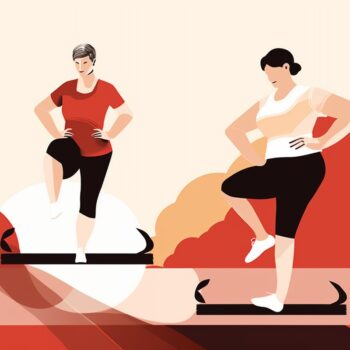 Menopause Macro Calculator
Menopause Macro Calculator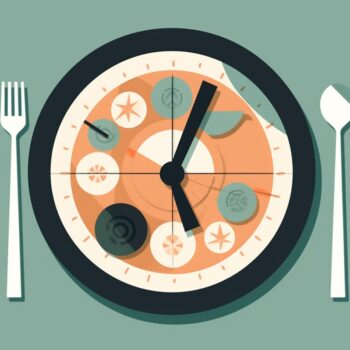 Intermittent Fasting Calculator
Intermittent Fasting Calculator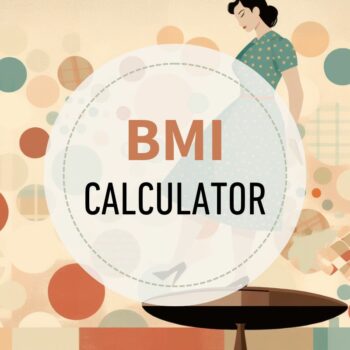 BMI Calculator
BMI Calculator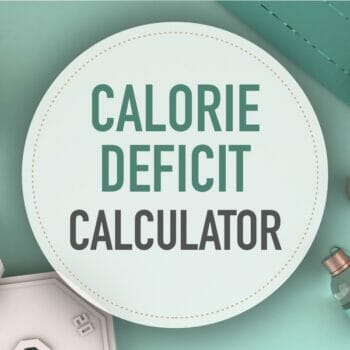 Calorie Deficit Calculator
Calorie Deficit Calculator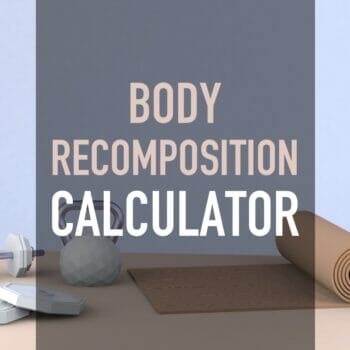 Body Recomposition Calculator
Body Recomposition Calculator
Hi Ted,
So I have Been counting my macros for the past 2 years, but after my dad passed away (9 months ago), I lost my way and gained 20 lbs of the 140 lbs that I had lost over the last 3 years. I finally got back on track 3 months ago, and I have lost 7 lbs so far (yay me!) As of right now I lift heavy weights for 30-45 mins, 5 days a week, I walk 1.5 miles 2 days a week, and then 3.5-4 miles 3 days week. I weigh 182 lbs, and my macros are as follows: 1970 cals, 185 carbs, 150 protein, and 70 fat. Are my macros okay for weight loss? Or are they too high or too low? Do you have any suggestions for me? I feel like I’m stuck and I don’t know what else to do. Any help would be much appreciated!!! Thanks so much!
Hi Margaret, Great work! So you’re weight loss has stalled? What does our calculator tell you? You didn’t give me your age or height so I’m not sure if your macros are correct or not.
Hi Ted, thank you so much! So sorry I forgot to give you my stats. I am 5’9, 32 years old, and your calculator says 1986 cals, 222g carbs, 150g protein, 55g fat. My weight loss has stalled, and I have noticed a decrease in energy. I’m also not getting a lot of sleep, which I think is adding to my stalled process. I do try to eat a majority of nutrient dense foods, but I do still have my “treats”. Thanks so much for getting back to me!!
Thanks for that 🙂 ok, try this since your exercise seems pretty varied. try to eat your macros fluidly based on your exercise. So establish your sedentary TDEE for weight loss and then track your exercise and eat those calories back according to how much exercise you do.
Example:
My sed. weight loss TDEE is 1600, so on rest days I only eat this amount. On exercise days for instance I might hike 6 miles and burn around 700 calories. On that day I would eat 2300 calories. I use myfitnesspal and mapmyfitness to keep track of everything and I created this tutorial to show you how to set it up. https://healthyeater.com/iifym-myfitnesspal-tutorial
Thank you so much! I am definitely going to try this and see how it goes! I’ll keep you updated on my progress.
Good morning Ted,
My name is Janelle and I am relatively new to tracking my macros. I have been tracking for about 2 months or so now…Currently, I weigh about 160 lbs, and I am 5 feet 8 inches tall. I am a 22 y/o female. I lift about 5 days a week and I am doing 45 mins- 1 hour of cardio on these days as well. According to my heart rate monitor, I burn around 900-1200 calories per workout. I am also a student and a waitress so I walk around 5 miles daily. I have used several calculators and they have all given me different macro levels. Right now, I am eating 173 g protein, 173 g carb, 38 g fat. Total calorie intake is about 1730 cals. I feel like this might be a little off. I am looking to really pack on the muscle (I am trying to compete in mid-November) and eliminate my extra fat (mostly in lower belly and thighs). I would guess my body fat percent is around 24% or so. Do you have any suggestions as to how I should alter my macros/calorie intake?
Thank you so much for your advice!! It truly means a lot to me 🙂
Best,
Janelle
Hi Janelle, You are not eating enough. On your workout days here are your calorie levels. 1730 -1200 = 530 calories for you body to function on, which way too low and is causing your body to go into starvation mode. No way you can build muscle eating like that. Your body is actually breaking down muscle.
Read here: https://healthyeater.com/eat-to-lose-weight
And then use our calculator to figure out your macros.
https://healthyeater.com/flexible-dieting-calculator
Hi, my name is Melinda, 18.5 years old. I’m currently looking to lose body fat. I was advised by my friend that to lose body fat, we need more protein and fats than carbs. I’m 88lbs at 148cm. Currently myfitnesspal is set on 45%P, 30%C and 25%F for 1200cals/day. Is it a good way to lose 2kgs in 6 weeks? I’m a moderately active person. Thanks in advance!
Hi Ted. Do u have an email address for further questions in the future?
Hi Bianca, as of now, we aren’t offering email consultation, but we encourage you to ask your questions here in the comments as they can help others as well.
Currently I’m eating 165 protein, 150 carbs and 64 fat. The past few days I’ve been good on my protein and carbs but my fat is 20-30 grams higher than it should be. Any suggestions on how to get that number down too? I’m not much of a meat eater so I’m having to get protein in other ways like protein bars or protein shakes. I’m wanting to lose weight. Right now I’m 175 and I do crossfit three times a week and try to get some running in as well.
A lot of protein supplements have fat so you could look for ones that are as low in fat as possible. Also cut back on high fat foods like eggs, nuts, and added oils. I’m not sure of your entire meal plan so it’s hard for me to make specific recommendations.
Hi. I am almost 21 years old, 175cm tall and I weight 125,6. I just recovered from eating disorder (lowest was 100 lbs, too much cardio and some weight training, to little food 1200-1500kcal at that time, one year ago I stopped counting because it was too frustrating). I know a lot about food, macros, ecc. But I just want to know if I am on the right track. Now I am about to weight train 4-5 days a week, almost without cardio. During my recovery I gained some both fat and muscle, now I want to put on at least 10lbs of muscle more. I calculated 2315 kcal (light activity, gain). Will this be ok for me?
Thank you in advance.
Hi Ursa, That seems right. I would recommend cutting back to your maintenance calories/macros during your rest days to avoid potential fat gain. Keep us posted on your progress.
Hi Ted I also have a question about calculating my macros since I’m breastfeeding. I used the breastfeeding calculator and it said my daily calories should be 1975. I don’t go to the gym yet, I usually do only light work outs about 5 days a week from home. What would my macros be if I’m wanting to lose weight?
Hi Morgan! The calculator factors in a 15% calorie deficit so I would use the number given and calculate your macros based on that. If your exercise increases you may want to increase your calories a bit. Here’s how to calculate your macros manually. https://healthyeater.com/how-to-calculate-your-macros
Congrats for the new baby!
Hi Ted ,
I want to know if I’m on the right track , I am 21 yrs old I workout 5-6 days a week I do 20mins of cardio and 35-40mins of streght training. I weight 150 , and I am 165.1 cm and I been working out for a while but my weight doesn’t go down . And I really want to loose weight and gain lean muscle . Is it cus I’m not eating enought ? Also I thought in order to loose weight you had to drop your grams in carbs ?
Hi Sofia, Thanks for visiting. I would need to know a little about your current calorie intake before I could assess and no there is nothing essentially bad about carbs. Refined sugars and carbs aren’t healthy, but it has been proven that only carb amounts that push you over your TDEE result in weight gain.
My current calorie intake is 1,489 a day .
It looks like according to our calculator you should be eating a little more based on your level of exercise. Select light exercise when calculating.
I work out 6 days a week (40-50 mins light cardio and then 30 mins strength training- abs/free weights/bodyweight exercise/resistance). Should I put “moderately active” in the IIFYM calculator?
Also I’m trying flexible dieting as an alternative to a very restrictive diet I was on for the past 3 months and I’ve noticed I’m getting a lot hungrier even though I’m eating more. Is that normal, my metabolism just speeding up again?
Also- I miss fruit! MFP always tells me my diet is too high in sugar (even though I’ve 90% cut out refined sugar, and only get sugar from fruit). I’ve also heard I should only have 2 pieces of fruit per day- is this right? On a related note, should I be looking in depth into the MFP micronutrients (sugar vs. fiber), or are macros all I need to worry about?
Hi Louisa, yes moderately active sounds about right. Also being hungrier is a sign of a faster metabolism so that’s a good thing. 🙂 Don’t worry so much about MFP’s sugar warning. It doesn’t consider the source of the sugar, so I don’t think it’s a valid measure. Just track your total carbs. 2 pieces of fruit a day is fine. Also if you are eating 85% healthy (a lot of vegetables and some fruit) you don’t have to worry about fiber and micronutrients as you’ll be getting plenty.
Thanks! I’m kind of confused about what my actual macro goals should be (to put in the calculator). I’m 170cm and 55kg. I’ve still got a bit of wobble (especially around my belly) and I want to tone/build lean muscle. Should I still be on a calorie deficit? Also should my calorie goals be the same on rest day?
I would say stay in a calorie deficit for a little while until you get where you want to be body fat % wise. I personally eat at my sedentary levels on rest days, but some do fine with sticking with the same macros across all days.
I feel like I’m gaining fat at the moment, since I started calculating my macros. I feel flabbier and less toned. I’m worried I might be losing muscle on a deficit! Could this be the case?
Perhaps you overestimated your exercise level? You really have to keep adjusting your macros until you find your sweet spot. The formula for the calculator is based on averages so of course some will lie outside of those perimeters. IIFYM does work but just like any diet it isn’t one size fit’s all so if you want it to work for you you’ll have to adjust until you find the correct macros for your body. Also it may takes some time for your body to readjust from being on such a restrictive diet in the past.
Hi. I am 31, 5’7” 160 lb. i have been doing 1750 cal, but my lbs started going up. In 2 weeks from 157 lb to 160 lb…
I am also breastfeeding ( had a baby 1 month ago ) and jogging about 3-4 miles a day with a stroller. What am i doing wrong?
I don’t think you are eating enough. If you look at this calculator https://www.freedieting.com/tools/breastfeeding_calorie_calculator.htm you should be at 2439 calories to maintain your weight and support breastfeeding. You’re burning 500+ running pushing a stroller + 675 calories needed daily for breastfeeding. This is leaving you only 575 calories to fuel, build repair your body. Your body may be conserving resources.
Ted, i gave a try eating more calories, however i am plus 3 lb. from 160 to 163 in 5 days. should i cut it back down ?
Yes you may want to. I forgot to mention that the breastfeeding calculator factors in a 15% calorie deficit. What had you increased your calories to?
I went from 1750 to 2100 per day , i was scared to go all the way to 2300. With increased calories numbers on scale started moving up a well..
I’m sorry I wish I could be more helpful, but I’m not an expert on pregnancy nor breastfeeding so you may want to discuss all of this with your OBGYN.
Hy !
My name is Anna and i am a latin american dancer. I practice every day (6days per week), 3 hours a day and I do also a workout or two per day ( like yoga , pilates or running). Should I consider this very activ ?
Please help me!
Thank you
Hi Anna, yes, you would be classified as very active as 3 hours of dancing alone burns 700+ calories.
Hi Ted
I came across your calculator after looking at the one on IIFYM and came up with different results. I wondered if I could ask your advice.
I’m 30, female, 110lbs and 158cm. I am not looking to lose any weight but want to decrease body fat and tone up. I currently work out 6 days a week…I do 4 x 30 min resistance circuits, 4 x 40 min brisk walks and 2 x 15 min sprint interval sessions spread across these days. I have a desk job but estimated I burned between 250-400 calories a day working out so I picked ‘lightly active’. I also picked ‘lose’ as I understand I would still need a deficit to drop the body fat. The calculator said I should be aiming for 1294 calories (F36, P93, C152). Does this amount seem too low and risk my body entering starvation mode?
IIFYM gave me 1502 calories (F38.5, P88, C200.9) based on their athletes formula, working out 6 days a week and a TDEE of 1767 (their calculation).
Thanks
Hi Sam, You have different results because the settings of our calculators are different. Their athlete setting calculates things differently. since you don’t want to lose much you may want to increase your macros a bit, so I would recommend using the moderately active setting which will still put you in a slight deficit, but still fuel your muscles and body properly. Good luck!